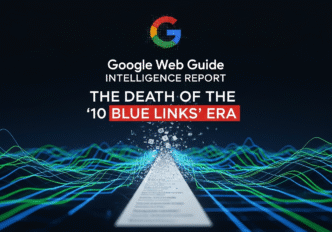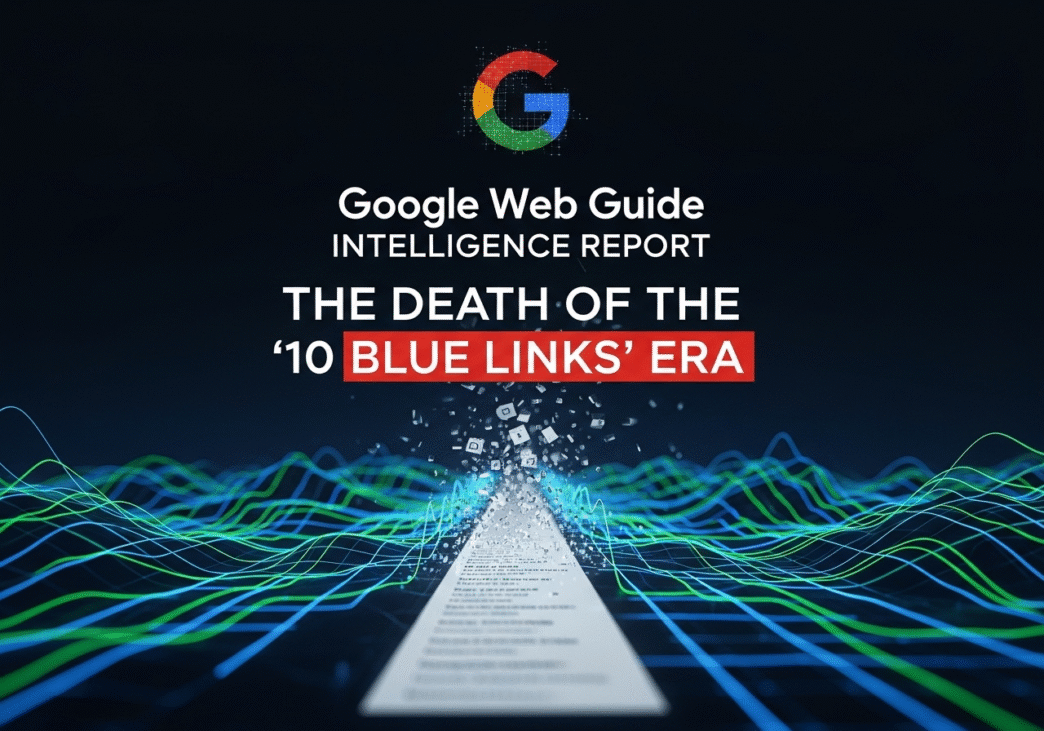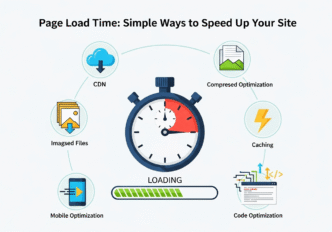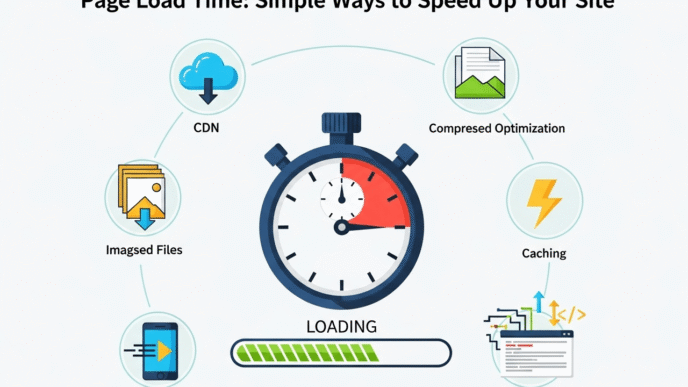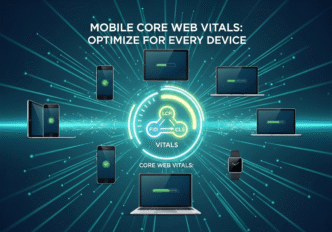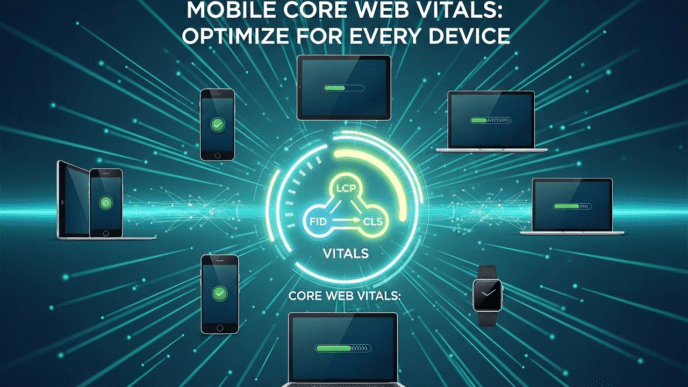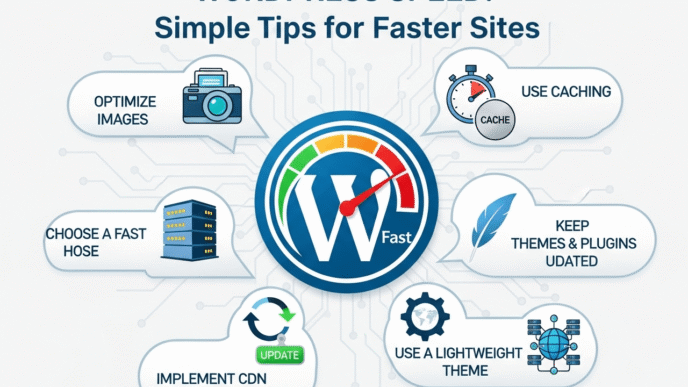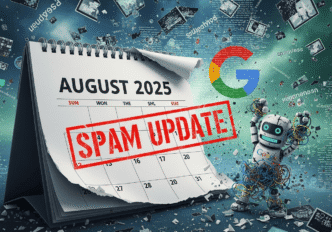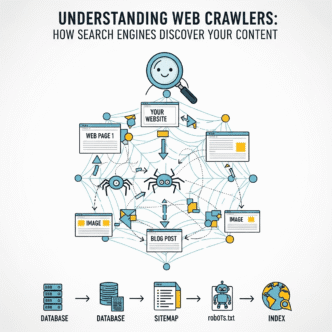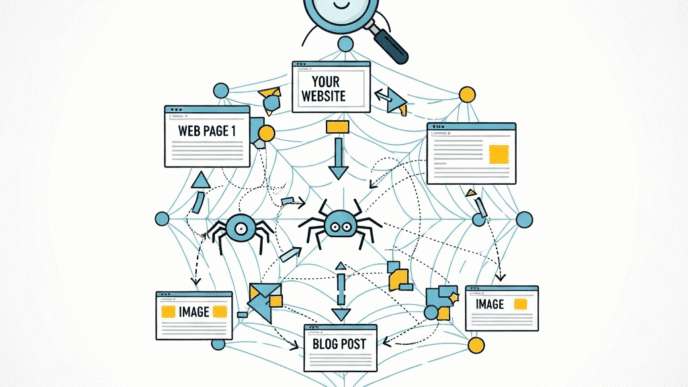Strategic Intelligence Brief | August 17, 2025
Table of Contents
Toggle
Executive Summary
Google’s Web Guide represents the most significant shift in search engine results pages (SERPs) since the introduction of featured snippets. This isn’t merely a cosmetic update—it’s a fundamental reimagining of how information discovery works on the web, signaling the transition from keyword-based search to semantic, AI-curated content clusters.
Our intelligence analysis reveals that Web Guide is positioned to become Google’s primary search interface for complex queries, potentially replacing traditional search results for millions of daily searches. Organizations that fail to adapt their SEO strategies risk becoming invisible in this new paradigm.
Technology Deep Dive: Understanding the “Query Fan-Out” Revolution
The Core Mechanism
Web Guide operates on a revolutionary “query fan-out” system that fundamentally changes how search queries are processed. Instead of matching exact keywords, the AI deconstructs user intent into multiple implicit sub-queries, creating a comprehensive search net that captures nuanced information needs.
Example Intelligence: For a query like “solo travel in Japan,” the system generates parallel searches for:
- Japan travel safety for solo women
- Best blogs for Japan travel
- Using the Japan Rail Pass
- Budget accommodation options
- Cultural etiquette for solo travelers
“The SERP is no longer a one-size-fits-all list; it’s a dynamically generated, personalized guide built to match the multiple, often unstated, intents of a specific user’s query.”
Technical Architecture
The system utilizes a customized Gemini AI model that creates thematic content clusters, organizing results into expandable categories rather than linear rankings. This represents a shift from document retrieval to knowledge curation.
Strategic Impact Analysis
For Publishers: Threat or Opportunity?
The Optimistic Scenario: Web Guide preserves the link-clicking paradigm, potentially making it more publisher-friendly than AI Overviews, which have shown devastating click-through rate impacts (nearly 50% reduction according to Pew Research).
The Realistic Assessment: While Web Guide maintains links, it cedes unprecedented editorial control to Google’s algorithm. Publishers lose direct influence over how their content is categorized and presented. This concern echoes Cloudflare CEO’s criticism of AI features “breaking publishers’ business models.”
“Even this more ‘link-friendly’ approach cedes immense editorial control to an opaque algorithm, making the ultimate impact on net traffic uncertain to say the least.”
Traffic Distribution Implications
Our analysis suggests Web Guide will create a more concentrated traffic distribution. Sites that achieve topical authority across multiple sub-queries will dominate clusters, while single-topic content may struggle for visibility.
Intelligence Assessment: Expect significant traffic volatility in the 6-12 months following wide rollout, with clear winners and losers emerging based on content architecture rather than traditional ranking factors.
The New SEO Playbook: Strategic Recommendations
Priority 1: Master the Query Fan-Out Strategy
Actionable Intelligence:
- Topic Mapping: Reverse-engineer your expertise areas into comprehensive topic trees
- Content Constellation Building: Create pillar content that links to exhaustive subtopic coverage
- Intent Prediction: Anticipate the sub-queries AI will generate for your target topics
“Success will belong to those who build a deep, semantic repository of expertise that AI can reliably understand, trust, and surface.”
Tactical Tip: Use tools like Answer The Public, AlsoAsked, and Google’s People Also Ask to identify potential fan-out queries, but go deeper—think like an AI trying to satisfy complex user intents.
Priority 2: Technical & Semantic Optimization
Critical Implementation Areas:
Structured Data Mastery
- Schema markup is now your direct communication line to AI models
- Focus on entity relationships, not just basic markup
- Implement comprehensive FAQ and HowTo schemas
Semantic Signal Enhancement
- Optimize for meaning, not just keywords
- Use clear entity relationships in your content
- Implement topic clustering in your site architecture
AI-Readable Content Structure
- Write with “hybrid chunking” in mind—AI breaks content into meaningful segments
- Use clear headings that signal content purpose
- Integrate visuals and metadata that support semantic understanding
“In this AI-gated search environment, meaning and context have become your new keywords.”
Technical Tip: Audit your content for semantic clarity—can an AI model easily identify the primary entities, relationships, and intent of each page?
Priority 3: E-E-A-T Amplification
Experience, Expertise, Authoritativeness, and Trustworthiness (E-E-A-T) become exponentially more important in AI-curated environments. The AI needs clear signals about content quality and authority.
Implementation Strategy:
- Author expertise demonstration
- Comprehensive source attribution
- Industry recognition markers
- User experience signals
Risk Assessment: The Black Box Problem
Algorithmic Bias Concerns
Web Guide’s opacity creates significant risks for content creators. The criteria for category generation and page inclusion remain hidden, raising questions about fairness and representation.
Intelligence Warning: Early testing suggests potential amplification of existing biases. Organizations should monitor their representation across different query types and demographics.
Competitive Vulnerabilities
High-Risk Scenarios:
- Topic Monopolization: Large publishers with comprehensive content could dominate entire topic clusters
- Algorithmic Dependency: Over-reliance on Google’s categorization creates single-point-of-failure risk
- Personalization Barriers: Hyper-personalized results may limit content discoverability
“There is a significant risk that the AI will not only reflect but also amplify existing societal and brand biases.”
Strategic Opinions and Predictions
The Paradigm Shift is Irreversible
Web Guide isn’t an experiment—it’s Google’s bridge to the semantic web future. Organizations treating this as another algorithm update will be left behind.
Opinion: The traditional SEO industry will bifurcate into two camps: those who adapt to semantic optimization and those who become irrelevant chasing outdated ranking factors.
Publisher Business Model Evolution
Prediction: We’ll see the emergence of “semantic publishers”—content organizations that architect their entire editorial strategy around AI discoverability rather than search rankings.
“The era of the 10 blue links is over. The era of the AI-curated ‘chunks’ has begun.”
Comparative Analysis: Web Guide vs. Competing AI Search Features
Feature Comparison Matrix
| Feature | Google Web Guide | AI Overviews | Traditional SERP | Bing Copilot |
|---|---|---|---|---|
| Primary Function | AI-powered content curation | Direct answer synthesis | Link-based results | Conversational search |
| Link Preservation | ✅ High (clustered links) | ❌ Low (summary focus) | ✅ Complete | ⚡ Moderate (cited sources) |
| Traffic Impact | 📊 Moderate negative | 📉 Severe negative (-50%) | 📈 Baseline | 📊 Moderate negative |
| Publisher Control | ❌ Algorithm-dependent | ❌ No control | ⚡ SEO influence | ❌ Limited control |
| Content Discovery | ✅ Enhanced (fan-out) | ❌ Limited | ⚡ Keyword-based | ✅ Enhanced |
| Personalization | ✅ High | ⚡ Moderate | ❌ Minimal | ✅ High |
| Commercial Intent | ✅ Preserved | ❌ Reduced | ✅ Strong | ⚡ Moderate |
Web Guide vs. AI Overviews: Critical Differences
Traffic Preservation: While AI Overviews show devastating 50% click-through rate reductions, Web Guide’s cluster approach maintains the link-clicking paradigm, potentially offering better traffic retention for publishers.
Content Depth: AI Overviews provide surface-level summaries, while Web Guide enables deep exploration across multiple facets of complex topics.
Commercial Viability: Web Guide preserves shopping and commercial query pathways, unlike AI Overviews which often bypass transactional content.
“Web Guide acts as a helpful librarian, guiding users to the right shelf in the library rather than just reading them a summary at the front desk.”
Expert Opinions & Industry Perspectives
Industry Analysis & Expert Consensus
While Google Web Guide is still in its experimental phase, leading SEO professionals and industry analysts have been tracking similar AI-driven search developments. Based on their documented insights about AI search evolution, several key themes emerge:
Semantic Search Imperative: Industry experts consistently emphasize that the shift toward semantic, AI-curated search is irreversible. The focus must move from keyword optimization to comprehensive topic authority and AI-readable content architecture.
Publisher Adaptation Urgency: SEO professionals widely agree that traditional ranking-focused strategies are becoming obsolete. Organizations that delay adaptation to AI-driven search features risk significant competitive disadvantage.
Traffic Distribution Concerns: Industry analysis suggests that AI search features will create more concentrated traffic patterns, benefiting sites with comprehensive topical expertise while potentially marginalizing single-topic content.
Research Firm Insights
Major technology research firms have begun analyzing the impact of AI-driven search features on digital marketing and content strategy, though specific analysis of Web Guide remains limited due to its recent introduction.
Key Industry Predictions:
- Significant shift in SEO strategies required by 2026
- Increased importance of structured data and semantic markup
- Need for diversified traffic acquisition strategies
- Evolution toward “Generative Engine Optimization” methodologies
Publisher Community Response
Early feedback from the publishing community reflects cautious optimism about Web Guide compared to AI Overviews, primarily due to its preservation of the link ecosystem. However, concerns persist about:
- Reduced editorial control over content presentation
- Potential traffic concentration among larger publishers
- Unclear algorithmic criteria for content curation
- Need for significant resource investment in content restructuring
“The era of gaming search algorithms is over—the age of genuine expertise and comprehensive topical authority has begun.”
Frequently Asked Questions (FAQs)
Implementation & Strategy
Q: How quickly should organizations adapt to Web Guide optimization? A: Immediate action is critical. Organizations should begin with a 30-day content audit and technical foundation sprint. Web Guide is already rolling out to users, and early adaptation provides competitive advantages in semantic search visibility.
Q: What’s the difference between traditional SEO and Generative Engine Optimization (GEO)? A: Traditional SEO focuses on keyword rankings and individual page optimization. GEO emphasizes semantic topic clusters, AI discoverability, and comprehensive topical authority. Instead of optimizing for crawlers, you’re optimizing for AI understanding and curation.
Q: Can small businesses compete with large publishers in Web Guide results? A: Yes, but strategy matters. Small businesses can excel by developing deep expertise in niche topics. Web Guide’s fan-out mechanism may actually benefit specialized content that comprehensively covers specific subtopics, even if it can’t compete on broad keywords.
Technical Implementation
Q: What structured data is most important for Web Guide visibility? A: Focus on entity-relationship markup: Organization, Person, Article, FAQ, and HowTo schemas. However, the key is not just implementing schema, but ensuring it accurately represents the semantic relationships within your content.
Q: How do I measure success in Web Guide optimization? A: Traditional metrics like keyword rankings become less relevant. Focus on:
- Topic cluster visibility across multiple related queries
- Click-through rates from AI-curated results
- Semantic search traffic patterns
- Content discoverability across fan-out queries
Q: Should I restructure my existing website architecture? A: Yes, but strategically. Implement topic clustering with clear pillar-cluster relationships. Ensure your URL structure reflects semantic topic organization rather than just keyword targeting.
Business Impact
Q: Will Web Guide kill organic traffic for publishers? A: Not necessarily. Unlike AI Overviews, Web Guide preserves the link ecosystem. However, traffic distribution will become more concentrated among sites with comprehensive topical authority. Publishers must adapt or risk invisibility.
Q: How should content creators adjust their editorial strategies? A: Shift from keyword-focused content to comprehensive topic coverage. Create content constellations that anticipate AI fan-out queries. Prioritize expertise demonstration over keyword density.
Q: What alternative traffic sources should publishers develop? A: Diversification is critical:
- Email marketing and newsletter subscriptions
- Direct social media engagement
- Brand awareness campaigns
- Community building initiatives
- Podcast and video content distribution
Advanced Strategy
Q: How can I predict what topics Web Guide will prioritize? A: Analyze your audience’s complex, multi-faceted questions. Use tools like Answer The Public and AlsoAsked, but think deeper—what sub-questions would an AI generate to comprehensively address user intent?
Q: Should I optimize differently for Web Guide vs. traditional search? A: Create hybrid optimization strategies. Maintain traditional SEO foundations while building semantic topic authority. Web Guide and traditional search will likely coexist, requiring dual-optimization approaches.
Q: What’s the biggest risk in adapting to Web Guide? A: Over-dependence on Google’s ecosystem. While adapting to Web Guide is necessary, organizations must simultaneously diversify traffic sources to reduce algorithmic dependency risks.
“Success now requires building comprehensive semantic authority that AI systems can understand, trust, and surface across multiple query contexts.”
Strategic Recommendation: Organizations must urgently diversify traffic sources. Google’s increasing control over information discovery creates unsustainable dependency risks. Consider investing in email marketing, social media presence, direct traffic initiatives, and newsletter subscriptions.
Immediate Action Items
30-Day Sprint
- Content Audit: Map existing content against potential query fan-out patterns
- Technical Foundation: Implement comprehensive structured data markup
- Competitive Intelligence: Monitor how competitors appear in Web Guide results using SEMrush or Ahrefs
90-Day Strategy
- Content Architecture Rebuild: Restructure content around semantic topic clusters using topic modeling tools
- Authority Development: Enhance E-E-A-T signals across all content with Google’s quality guidelines
- Measurement Framework: Develop new KPIs for semantic search visibility using Google Search Console and Google Analytics 4
180-Day Transformation
- Full GEO Implementation: Complete transition to Generative Engine Optimization
- Traffic Diversification: Reduce Google dependency below 50%
- Innovation Investment: Develop native AI integration capabilities
Conclusion: Adapting to the Semantic Future
Google Web Guide represents more than a search feature update—it’s the manifestation of a fundamental shift toward semantic, AI-curated information discovery. Organizations that recognize this transition and adapt their strategies accordingly will thrive in the new paradigm.
The key insight is that traditional SEO’s focus on rankings and keywords is becoming obsolete. Success now requires building comprehensive semantic authority that AI systems can understand, trust, and surface across multiple query contexts.
“The strategies that guaranteed success in the past are no longer sufficient. Adaptation is not optional.”
The organizations that will dominate in this new era are those who embrace the complexity of semantic optimization while building sustainable, diversified digital strategies. The age of gaming search algorithms is over—the age of genuine expertise and comprehensive topical authority has begun.
Final Assessment: Web Guide is not just reshaping the SERP; it’s reshaping the entire digital content economy. The question isn’t whether to adapt—it’s how quickly you can transform your approach to remain competitive in this new semantic landscape.
